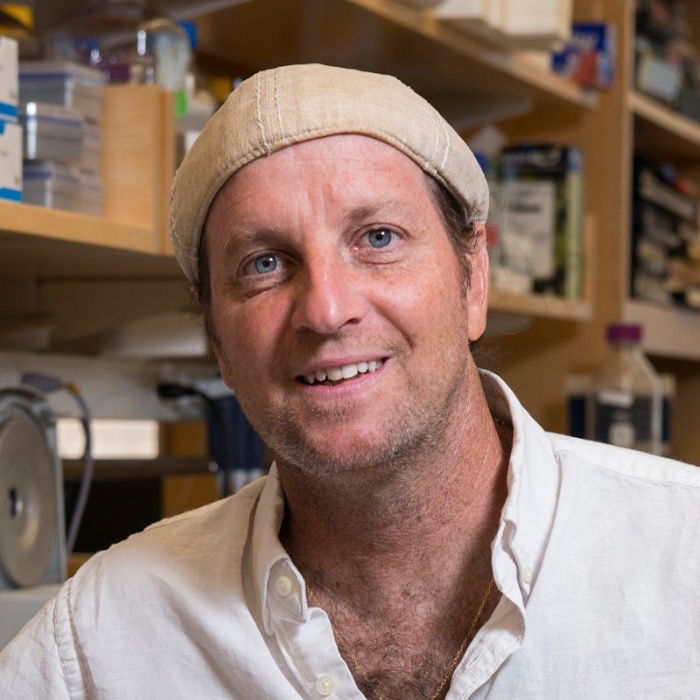Dr. Raul Mostoslavsky
Raul Mostoslavsky, MD is the Laurel Schwartz Professor of Oncology at Harvard Medical School, Scientific Director of the Massachusetts General Hospital Cancer Center, and an Associate Member of The Broad Institute with over 20 years of experience in cancer metabolism, epigenetics, and chromatin biology.
He is internationally recognized for his groundbreaking discoveries on the SIRT6 protein and its role as a tumor suppressor, having transformed our understanding of the molecular mechanisms underlying the Warburg effect in cancer cells. Read Untangling the fiber yarn: butyrate feeds Warburg to suppress colorectal cancer.
Raul leads an innovative research laboratory at MGH Cancer Center that focuses on the crosstalk between chromatin dynamics and cellular metabolism, particularly exploring how cancer cells adapt to nutrient stress and the unique metabolic vulnerabilities of metastatic cells. Read SIRT1 Redistribution on Chromatin Promotes Genomic Stability but Alters Gene Expression during Aging.
As Scientific Director of the MGH Cancer Center since 2020, Raul oversees collaborative research initiatives and has been instrumental in advancing precision cancer therapeutics. His laboratory made a landmark discovery published in Nature Metabolism in 2023, identifying how cancer cells adapt to glutamine starvation by downregulating the proline biosynthetic enzyme P5CS, revealing unprecedented metabolic plasticity in tumor cells. This work, conducted with collaborators including Joaquin M. Espinosa at University of Colorado and teams at the Broad Institute, opens new therapeutic avenues for targeting cancer metabolism.
Raul received the prestigious 2023 Inaugural Krantz Breakthrough Award alongside Nabeel Bardeesy for their collaborative project exploring cancer metabolism to direct treatments. Read Inhibition of the proline metabolism rate-limiting enzyme P5CS allows proliferation of glutamine-restricted cancer cells.
In 2012, Raul’s laboratory published the paper The Histone Deacetylase SIRT6 Is a Tumor Suppressor that Controls Cancer Metabolism in Cell, demonstrating that SIRT6 functions as a tumor suppressor controlling cancer metabolism, providing the first molecular explanation for the Warburg effect that had puzzled scientists since Otto Warburg’s observations decades earlier. This discovery established SIRT6 as a critical epigenetic modulator that directs glucose away from glycolysis and into mitochondrial respiration, protecting against the metabolic switch characteristic of cancer cells.
His subsequent work in 2016, also published in Cell, revealed SIRT6’s role in suppressing pancreatic cancer through control of the oncofetal protein Lin28b, further cementing its importance as a master regulator of tumor suppression. The Mostoslavsky Laboratory has published over 180 research articles with more than 30,000 citations according to Google Scholar, establishing Raul as a leading authority in the field of cancer epigenetics and metabolism. Read The Histone Deacetylase SIRT6 is a tumor suppressor that controls cancer metabolism and SIRT6 suppresses pancreatic cancer through control of Lin28b.
Between 2012 and 2017, Raul served as the Kristine and Bob Higgins MGH Research Scholar, an honor that provided critical funding to explore the role of SIRT6 in embryonic stem cell differentiation and discover cancer-specific point mutations. His research has been continuously supported by multiple NIH grants including R33ES025638 and R01GM128448, the Massachusetts Life Sciences Center Bits to Bytes award, and the V Foundation for Cancer Research.
As a member of the Dana-Farber/Harvard Cancer Center, he collaborates with over 1,100 cancer researchers across seven Harvard institutions, fostering interdisciplinary approaches to understanding cancer biology. His laboratory’s research on the unique metabolic adaptations of metastatic cells and their ability to establish and grow in new niche environments represents a frontier in understanding cancer progression. Watch Dr. Raul Mostoslavsky—SIRT6 and the Hallmarks of Aging.
Raul earned his Doctor of Medicine degree from the Universidad Nacional de Tucumán in Argentina in 1993, where he developed his foundation in clinical medicine before pursuing advanced research training. He subsequently earned his Ph.D. in Molecular Biology from The Hebrew University of Jerusalem in 2000, where his doctoral thesis on molecular mechanisms, The Role of Chromatin Structure in the Establishment of K-chain Allelic Exclusion, earned him the prestigious Rector Prize for Excellence.
Following his doctorate, Raul completed postdoctoral training at Harvard Medical School, where he began his pioneering work on sirtuins and their role in chromatin dynamics. Read DNA repair, insulin signaling and sirtuins: at the crossroads between cancer an d aging.
In 2002, he received the Science-Amersham Prize for Young Scientists, recognizing his exceptional early career contributions to the field. He joined the faculty at Harvard Medical School as Assistant Professor in 2007, advancing to Associate Professor in 2013 and achieving full Professor status in 2019, when he was also named the Laurel Schwartz Professor of Oncology.
Throughout his career, Raul has mentored numerous graduate students and postdoctoral fellows who have gone on to successful careers in academia and industry. His laboratory at the Simches Research Building maintains an active international team of researchers from countries including Argentina, Korea, Switzerland, Uruguay, and Ghana, reflecting his commitment to fostering global scientific collaboration. The lab’s location within the Cancer Center and Harvard Medical School provides an intellectually vibrant environment with strong connections throughout Harvard, MIT, and the broader Boston biomedical community.
Raul’s brother, Gustavo Mostoslavsky, is also a distinguished scientist, serving as a Professor at Boston University School of Medicine where he leads research on stem cell biology and gene therapy.
Beyond his primary research, Raul serves on multiple editorial boards and grant review panels, contributing to the broader scientific community’s advancement. He has delivered keynote addresses at major international conferences and his work has been featured in leading media outlets discussing breakthrough cancer research.
His laboratory continues to explore novel metabolic liabilities in cancer, including investigating how cells adapt to extreme nutrient conditions and the role of metabolite availability in determining chromatin modifications. The team employs cutting-edge techniques including CRISPR screening, metabolomics, and genetically engineered mouse models to uncover fundamental mechanisms of cancer biology.
Visit his LinkedIn profile, ResearchGate profile, Laboratory Homepage, and Google Scholar page. Follow him on Facebook and X.
